Build Track's John Armstrong,
Maryland longrifle parts set,
with 13/16", or 7/8" straight octagon barrel
|
|
Build Track's John Armstrong Maryland longrifle parts set,
easy to assemble, up to 42" octagon barrel,
traditional brass or iron trim, plain or fancy maple stock
Many schools of style exist for Maryland longrifles. The Emmitsburg school turned out many fine rifles thanks to the skills of makers such as John Armstrong, Peter White, and George Nunemaker. This classic fullstock flint rifle is made in the style of the Maryland gunmaker, John Armstrong the master gunsmith of the Emmitsburg school. Stocked in fancy maple, and finished in traditional brass.
This beautiful Maryland style longrifle was hand made by J. Eddie Brown, a skilled gun maker, who has replicated a number of original schools of style. This rifle features a fancy maple stock, a Jim Chambers deluxe Siler flintlock, R.E. Davis double set triggers, and brass furniture with silver accents.
The hand made patchbox is replica of a John Armstrong patchbox shown in Gunsmiths of Maryland by Daniel D. Hartzler & James B. Whisker. Cut your own patchbox from one of our patch box kits, or choose one of our pre-shaped patchboxes.
The stock is stained to a dark chocoalte brown, and hand rubbed to best reveal the curly maple's tiger stripe figure. Decorated with raised and incised carving, and hand engraved brass hardware. Study the techniques of gun-building in the book Recreating the American Longrifle,, and you can build your own.
The heel of the buttplate has been re-enforced with a hand made steel insert. Found on some original longrifles, this is designed to protect the heel of the buttplate from wear while loading the rifle.
This top view shows the flared thumbnail breechplug tang, surrounded by raised carving. The comb stands above the oval wrist, set off with raised carving, a feature sometimes called a cameo wrist. This carving is very shallow and the pre-carved stock has enough wood to allow for raised carving. The tapered comb of the buttstock ends in an early 1800's era buttplate. A optional button release for the patchbox is mounted behind the comb screw. Notice the cheek, which angles wider to the rear. It will recoil back, away from your cheek, when fired.
The bottom view reveals the tightly fitted engraved brass toeplate with four piercings, retained with three steel screws. Note how the slots are neatly aligned.
Mr. J. Eddie Brown's carving is well defined, crisp, and nicely finished with smooth backgrounds, the hand work of an American artist. With practice you too can build a fine rifle.
A large nickel silver inlay, engraved with a federal eagle decorates the cheek piece. Just as seen on a original John Armstrong rifle. We offer a similar engraved oval inlay in brass or nickel silver.
Order our John Armstrong, Maryland longrifle parts set, from our suggested list of parts to build a rifle similar to the one shown. Plain or fancy maple, carved or inlaid, double set triggers, brass furniture with four keys many options are available. Each part is offered separately, so you can create your own custom rifle. Select the parts you need for your project. Offered with traditional brass furniture. We recommend plain or fancy maple.
Colerain Barrel Company offers a select few calibers and octagon sizes in 13/16" and 7/8" straight octagon barrels. Offered in .36, .40, .45, or .50 caliber depending on octagon size. Colerain straight octagon barrels are threaded to accept the breech plug.
Colerain rifle barrels are the favorite choice of today's best muzzle loading gun makers, because knowledgeable shooters demand Colerain's accuracy, inside and outside. Founded by two entrepreneurs, Scott Keller and Scott Kelly were tutored by Bob Paris, the famous rifle barrel maker who was first to perfect the technique for production of correct swamped barrels.
Colerain rifle barrels are cut rifled, with fancy radius groove rifling geometry, in correct twist rates for round balls:
- Cut rifled, with .012" to .016" deep grooves, depending on caliber.
- 1 turn in 48" twist, in .36 or .40 caliber.
- 1 turn in 56" twist, in .45, or .50 caliber.
Colerain rifle barrels are drilled from solid steel. Each barrel has six "round bottom" grooves, called "radius groove rifling". Colerain eliminates the sharp inside corner that accumulates fouling. Radius groove rifling cutters are a bit more expensive to make, but Colerain's customers agree that the accuracy, easy loading, and easy cleaning are worth the cost.
We offer a complete set of cast brass furniture, to build this nice rifle.
Our suggested furniture includes:
- Buttplate, wax cast brass or steel
- Triggerguard, wax cast brass or steel
- Toeplate, brass or nickel silver
- Two forward and one entry ramrod pipe, wax cast brass or steel (5/16" diameter for .32, or .36 use formed sheet ramrod pipes)
- Sideplate, brass or steel
- Ramrod tip, brass or steel
- Muzzle cap, brass or steel
- Six scroll inlays for keys escuetions, nickel silver
- Two star inlays for rear key escuetions, nickel silver
All parts are as cast, the castings need to have the casting gates removed by filing or grinding, and must be polished, then drilled for mounting screws, as needed. Folded sheet metal ramrod pipes are 5/16" to suit the .36 caliber rifles, larger calibers use wax cast 3/8" diameter ramrod pipes.
Stocks, our graceful John Armstrong stock will make an attractive Maryland longrifle, when trimmed in brass. Cut for a 13/16", or 7/8" straight octagon 42" barrel channel, and right hand large Siler flintlock, our #TR-DST-4 or #TR-DST-6 double set triggers. The flared tang inlet is under-size. The 3/8" rod hole drilled full depth, not milled. The 5/16" ramrod will work well in this hole and groove. The forend is shaped. The buttplate is uncut. The square cheek is well defined, and it has very crisp lock panels.
Front sights:
#FS-DRU-BB: The un-cut nickel silver blade is .063" thick, standing .346" above the base, which is .385" long, .750" wide, and .064" deep. The brass base has re-enforced fillets.
#FS-TC-HB-TH: Polished silver blade with brass base. Rounded silver blade is 3/8" tall. The brass dovetail base is .370" long, .750 wide, and .062" deep. Remember, don't file off the ends to match the barrel.
#FS-TC-LB: Sometimes called “fine" sights, old timers believed that very low sights minimized error. Today we know that the “mirage" effect from barrel heat elimates any advantage of low sights. This replica antique sight is only .220" high, on a .370" long base, .062" deep.
#FS-TC-TT-B: Extra tall .050" thick blade on a brass dovetail. Nickel silver blade is .400" tall. The brass base is .371" long, .600" wide, .090" deep.
Rear sights:
#RS-LB-14: A crisp wax casting, not polished, this steel rear sight has an extra long base that may be trimmed to fit an over-sized dovetail, up to 1" length. The sight blade tilt minimizes mirage and glare. Made in the U. S. A., the dovetail is 1" long by .539" wide. Dovetail to a depth of .050".
#RS-DRU-CT: This rear sight has a concealed dovetail under a front and rear skirt. It will hide a rough looking slot on a 13/16" or 7/8" octagon barrel. The dovetail is about .385" as cast, it will clean up to a standard .375" dovetail. The base is .550" wide.
Siler flint lock, our #LOCK-SL-FL-RH, is a correct flint lock, made for scratch builders. The Siler flint lock is our most popular, by far. This lock is modeled after a fine hand made original lock, by the famous American gunmaker, Jacob Dickert. Only a few American gunmakers made their own locks. Dickert may have made and sold locks to others. We have examined a few rifles by Dickert, and none of his locks are exactly alike, nor were any exactly the same as our Siler lock. This lock captures the styling used on many American longrifles. Most locks were imported from England or Europe, for use by American gunmakers.
We recommend our best 3/4" English gun flint, in our large Siler lock. Assembled from the fine quality wax cast alloy steel parts, designed by C. E. Siler, Track's right hand Siler lock is assembled and tuned by Jim Chambers. Working parts are fitted as necessary for best action and minimum friction. Evidence of the lock maker's skill is obvious in the tight fit of the pan, internal parts, smooth action, and strong mainspring. A fly detent allows the use of set triggers, if desired.
A pan bridle arm supports the frizzen, a feature not always found on early American flint locks. Many of our best stocks are pre-inlet for our large Siler flint and percussion locks.
Chambers' Deluxe Siler flint lock, our #LOCK-CD-FL-RH, is said to be the fastest and most reliable “Siler" flint lock ever made. This new right hand flint lock is the latest offering from that ingenious lock maker, Mr. Jim Chambers. He has included every trick in this lock. Built on a true Siler lock plate, pan and frizzen, it will fit any mortise pre-inlet for the large Siler lock.
Nearly every other part has been modified or fine tuned for speed. Notice the slightly taller cock, top jaw and jaw screw, which sweep the frizzen from a higher point with more velocity, for better sparking.
The frizzen is hardened through, for long life. It rides over a cam-action frizzen spring, that is as pretty as it is clever. The thin upper leaf and redesigned cam point allow the frizzen to snap open smartly. No roller is used on this frizzen! A roller is not correct for this period, and recent high speed photo tests indicate that the so-called “frictionless" roller can increase the mainspring's work load, slow the lock time, and reduce sparking. This fast acting frizzen spring uses an elegant hidden mounting screw, and has fewer parts to fail in the field.
The lock plate is polished bright inside. Fitted with Chambers' best large Siler internal parts, each part has been tuned for best action. The mainspring has “pre-load" for snappy action. The new tumbler has tiny offset bearings, to reduce friction. The mainspring rides on the tumbler's redesigned cam-action ramp, giving a smooth release at full cock, with increasing leverage for maximum acceleration.
Fine tuned to provide snappy action and good sparking, the sear is adjusted to give light release, despite the heavy mainspring load. Grey matte finished outside, the plate, cock, top jaw, pan and back surfaces of the frizzen are ready for cold browning or polishing. If you are building a right hand flint longrifle, and searching for the best large Siler flint lock, regardless of price, we offer this candidate.
Flash Hole Liner, touch hole liner, or vent liner, is an essential part of our kit. Our standard vent has the popular 1/4-28 thread. We also offer the Jim Chambers White Lightnin' vent as a option. The special 5/16-32 fine thread allows an extra large concave cavity inside, for use on swamped octagon barrels. Made in the USA, stainless steel, with removable lug for easy installation. Order our #TAP-5/16-32 tap and drill, if you prefer this special vent.
Concave inside, the White Lightnin' vent liner brings the main powder charge very close to the incandescent heat of the priming flash. Position the vent on the center of the pan, slightly above the pan to frizzen joint, sometimes called the "sunset" position. Covered by the frizzen when closed, the hole is a window centered on the heat of your priming flash, for instant ignition, without the whoosh-bang delay, seen in many flint guns.
Typically only the better quality London made guns were factory fitted with vent liners, but nearly all flint guns were later fitted with vent liners, after the vent hole in the barrel became worn from flash erosion, corrosion, or the aggressive use of a vent pick.
Double set triggers:
#TR-DST-4, is our “double lever" double set trigger, with a front trigger lever, to engage the sear, allowing the lock to be fired with the trigger unset. Wax cast steel parts are finished, tempered and assembled. We stock spare parts, in the unlikely event that any part will ever break. The trigger bars is about 5-3/8" length, .400" width.
#TR-DST-6: Our larger double lever double set trigger, with curled front trigger. This trigger plate is 7/16" longer than #TR-DST-1 & 4 triggers. This double lever trigger will fire your lock set or unset. The plate is about .400" wide. Wax cast steel parts are tempered and assembled by Davis. We stock spare parts for this reliable fully assembled trigger. Overall length 5-3/4", bar .400" wide.
Patchbox, although not required, was often fitted to a Maryland school longrifle. We offer a number of correct choices. These may be installed with the included cam-over-center spring, or using our push button release kit, at extra cost.
#PB-KIT-B: curved to fit your stock, neatly hinged, with steel cam finger inside the lid, cam spring and mounting screw. Polished outside, the curved hinge works well. Made of .052" thick sheet brass. The flat spring is tempered, ready to use, it may be soldered under the lid. Shape this blank kit to copy an original, or create your own design. About 7-3/4" overall length.
#PB-KIT-41-B: Shown in Gunsmiths of Maryland by James Whisker, used by John Armstrong and related gunsmiths. Spring and instructions included. We recommend mounting the patchbox with our #SCREW-6-1/2 unplated iron wood screws. About 8-1/4" overall length.
#PB-KIT-4-B: Copied from an early rifle by A. Schweitzer, Chambersburg, Pennsylvania. A similar horse head patchbox is found on a Maryland longrifle by Henry Koons. 7-1/2" overall length.
#PB-RK-TOW-B or I: This high quality patchbox release kit is made for use with brass, iron, or nickel silver patchboxes. The kit includes four precision steel parts, two unplated steel screws, and fully illustrated instructions. Made with your choice of a brass or steel release button.
Gunsmithing Labor Options are a popular low cost method of speeding assembly. Our gunsmith can install the plug (#LABOR-BP), front and rear sights (2 #LABOR-DS), and underlugs (4 #LABOR-UL) at small extra cost, with prompt delivery.
#LABOR-BP: Our gunsmith will install your breech plug, in your barrel, with the front face of the breech plug tightly sealed against the inside shoulder of the breech thread, and the barrel maker's name indexed to the bottom flat. Threads are lubricated with Birchwood Casey's Choke Tube Lube anti-seize, so the plug may be removed, even after decades of use. Never remove a breech plug, unless you have a compelling reason. The plug is never removed for cleaning, and should only be removed by a skilled gunsmith, who has the correct tools to avoid marking your polished and finished barrel and plug.
#LABOR-DS: When you buy the sight from us, we will remove any burrs, gates, or parting lines, and hand fit the sight to the dovetail slot, ready for you to finish and use. Many of our rear sights are cast with an oversize base, to allow these to fill oversize slots. It is wise to allow us to trim these to a standard size, before installation in a new barrel. We must install the breech plug before installing sights, rib, or pipes.
Front sight slots are centered 1.5" from muzzle, unless your clearly specify another location. Do not embed special instructions within lengthy text of a letter. Place special instructions immediately after your written order for that item, or in the comment field of our on-line order form.
Rear sight slots are centered 8.5" from the breech end of the barrel (not including plug), unless your clearly specify another location. Do not embed special instructions within lengthy text of a letter. Place special instructions immediately after your written order for that item, or in the comment field of our on-line order form.
#LABOR-UL: When you buy the lugs from us, we will remove any burrs, and hand fit the lug to the dovetail slot, ready for you to finish and use. Allow our gunsmith to determine the best location for lug. Typically these rifles require three lugs. We require the breech plug to be fitted before performing this operation.
#BOOK-RAL: We strongly recommend Recreating the American Longrifle, by William Buchele. The late William Buchele was recognized as a true master longrifle maker. But his greatest contribution to muzzle loading must be this book. He shares the step-by-step details of his craft. His work has been enhanced by the editors. This book does not assume that the reader is an expert stock maker, but begins with illustrated explanations of the basic concepts. Buchele shows several alternate approaches to most tasks. This newly revised edition includes full scale plans for a carved flint longrifle, and fullstock flint pistol. Over 250 photos and drawings, within 176 pages, 8-1/2 x 11" format, soft cover.
#DVD-BML: Building Muzzle-Loaders VHS video with rifle maker James Turpin. Rifle maker James Turpin takes you start to finish on building a quality Muzzle-Loading flint rifle. Designed for the beginning to intermediate builder. DVD format, 142 Minutes.
#DVD-BE: The Gunsmith's Apprentice Series Presents "Beginning Engraving", taught by gunmaker Jack Brooks. With this video you can learn to engrave in the manner and style of the original masters.
In this presentation the nationally known traditional longrifle builder Jack Brooks teaches the viewer the essentials of chasing, pushing & wriggle engraving. Beginning with the basic tools, Jack shows the sharpening and heat treating of both square and chisel point engraving tools, and demonstrates the techniques used by period American gunsmiths to decorate their firearms. In addition, the engraving of several original 18th and 19th century longrifles is examined in detail. Over 70 minutes long. VHS format.
We also recommend our new catalog, which describes this kit in great detail, explains the options, and shows most individual parts in exact full size photographs. Prices may change, over the years, but the technical data, dimensions, instructions, and precise photos will make this 432 page book an essential too on your work bench.
Gun building is fun! Click ADD TO CART, and send your order, for same day shipment.
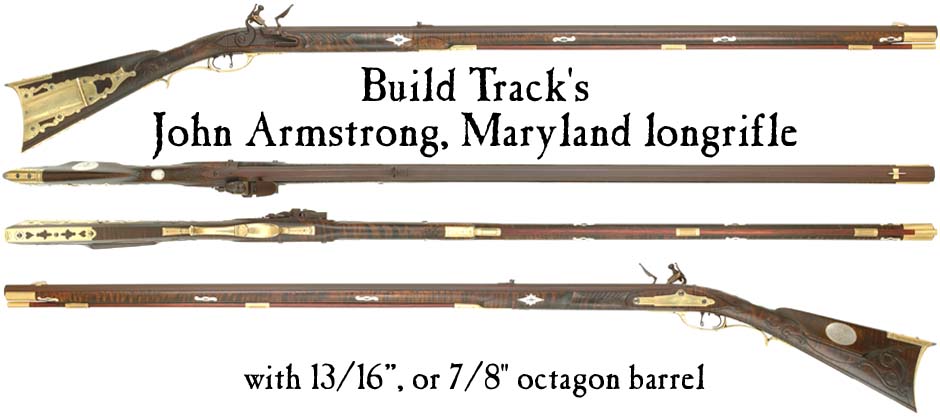
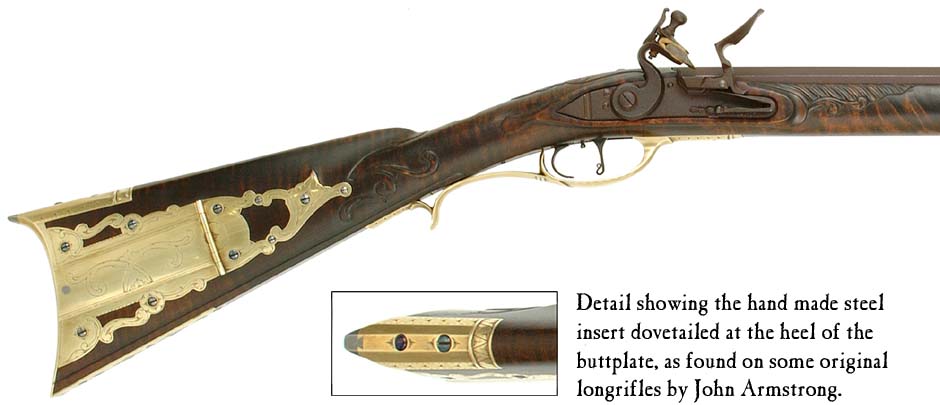


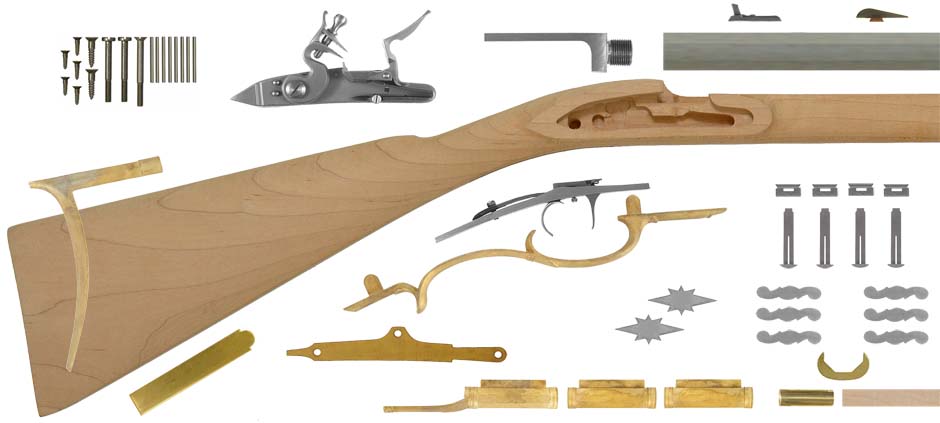
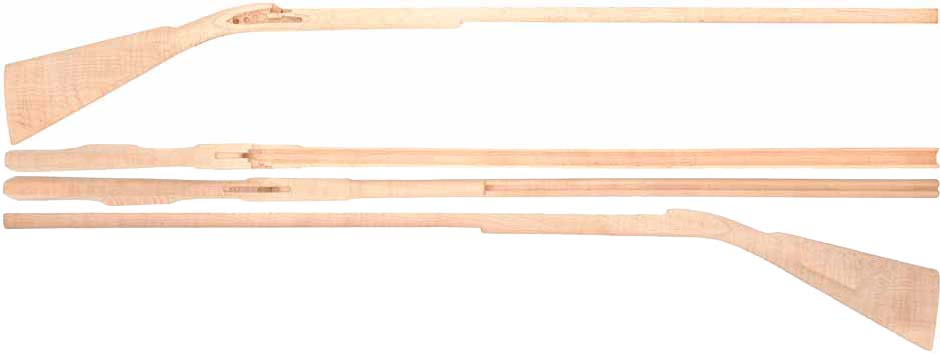
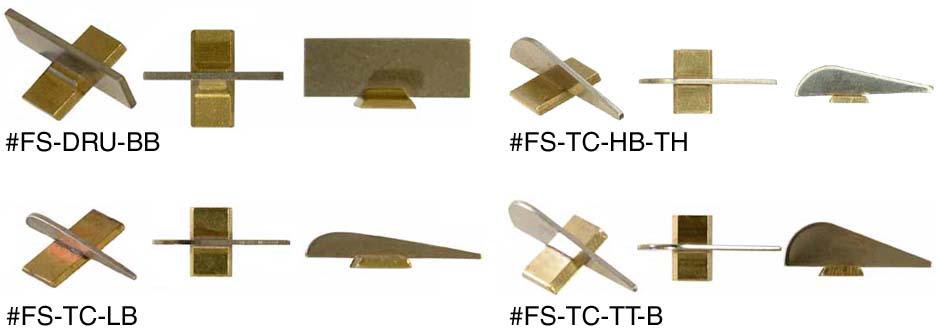
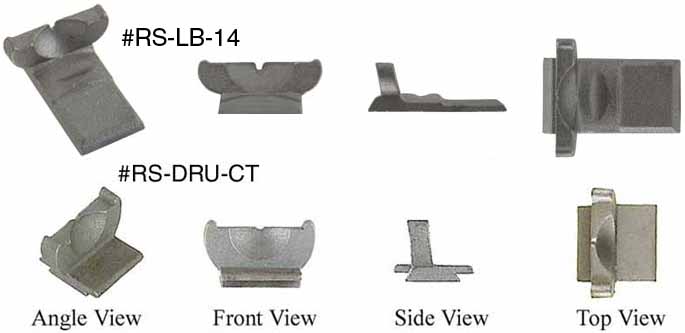
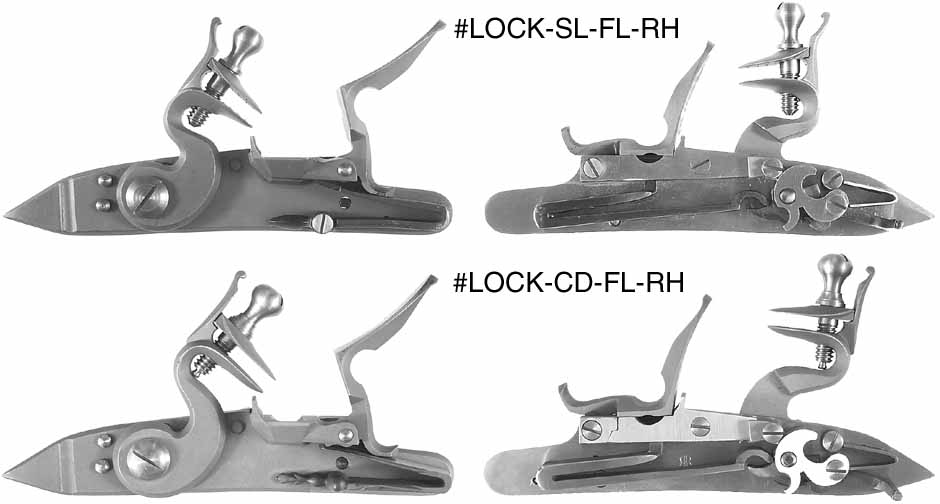
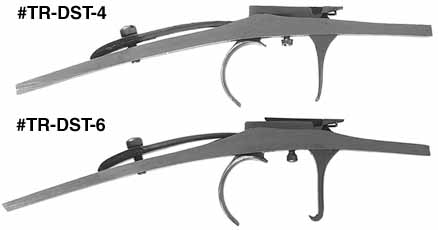
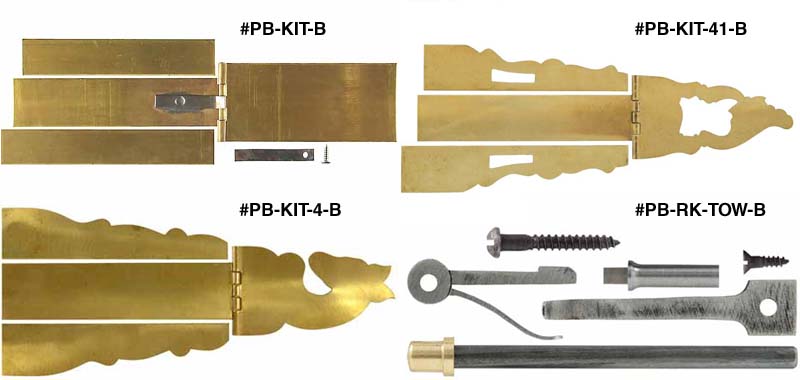

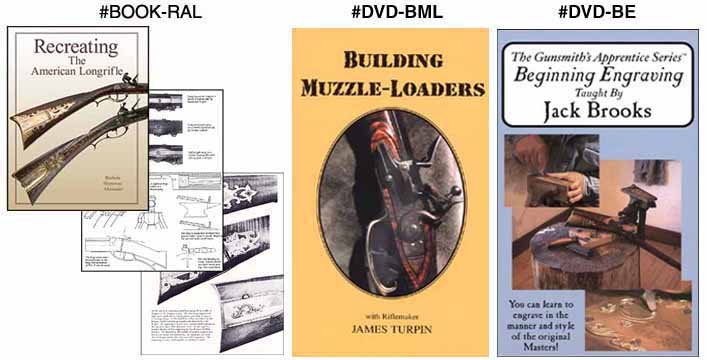
Track of the Wolf, Inc.
18308 Joplin St NW
Elk River, MN 55330-1773
Copyright ©
2025 Track of the Wolf, Inc.














